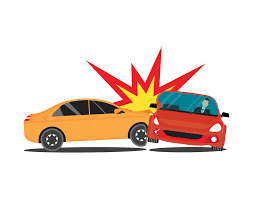The different policies offered under auto insurance cover
In contrast to health insurance, a car insurance policy has multiple underwriting options, each with its own set of costs and benefits. Drivers can choose different quantities for the various components, so it’s important to understand which plan is best for your specific situation. Some of the most common types of car insurance are provided below.
●Liability car insurance
●Personal injury car insurance
●Lease Insurance
●Personal injury protection
●Uninsured/underinsured motorist insurance
Liability car insurance
Liability car insurance provides financial protection for other drivers in the event of an accident where you are at fault. This policy covers BI and property damage. Work-related injury expenses are covered by BI, while property losses are covered by PD in the event of an accident. Driving in most states requires other types of financial liability coverage or certification. This ensures that drivers who damage property or hurt others are held accountable for their actions and pay the compensation they owe.
The following format is often used to indicate the three-digit limit of a liability insurance policy: 25/50/10.
Physical damage car insurance

Physical damage Car insurance pays for repairing damage to your vehicle in a collision or falling tree branches. The insurance policy is divided into two categories: comprehensive insurance and collision insurance, which are distinguished according to the damage of your vehicle. Usually, before your insurance starts to pay, you need to pay a deductible, which ranges from $50 to $2,000. Your rate is affected by the deductible you choose, a larger deductible will result in a cheaper premium, and vice versa.
Lease insurance
Some insurance companies extend liability insurance coverage to rent a car. Please check with your insurance company before paying extra for the car insurance provided by the rental company. Keep in mind that this policy is different from car rental reimbursement insurance, which is an alternative plan to cover rental vehicles while your vehicle is under repair.
Personal injury protection or no fault
Victims of car accidents receive Personal Injury Protection (PIP), which is used to pay for medical expenses incurred and their passengers. This type of insurance is called "no-fault insurance, because no matter who is responsible for the accident, it will pay for your injury." According to the policy, PIP may also cover lost wages, household expenses, and even funeral expenses. PIP is a legal requirement in certain places, including Michigan and New York; it is an option for others.
If you are injured in an accident, the "fault" state requires you to file a claim and even sue for fault insurance. For people with limited budgets, this long process may be unattractive. However, the no-fault status of the rate may be higher because the PIP covers the cost regardless of who is at fault.
Uninsured/underinsured motorist insurance

Although most states require drivers to purchase liability insurance, many uninsured drivers are still on the road today. The percentage of uninsured drivers varies greatly from state to state, ranging from 12% to 25%. Your uninsured driver’s insurance will cover uninsured or less insured drivers. In some cases, it may be beneficial to have this type of insurance. Car insurance requirements in several states include UM/UIM insurance.